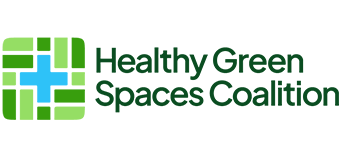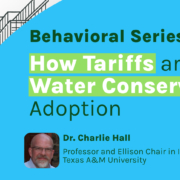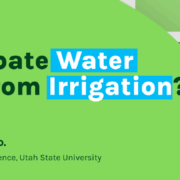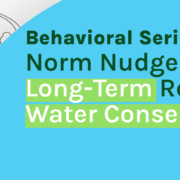Beyond Cash: The Behavioral Science Behind Homeowners’ Water Conservation Choices
Why do many homeowners skip water conservation? Small-scale, low-commitment upgrades drive broader participation.
Executive Editor: Steve Whitesell
Expert Review: Dr Marco Palma
Key Takeaways
- Homeowners avoid rebate programs when loss, delay, risk, or effort feel high—psychology limits participation.
- Complex applications and inspections add cognitive load that deters participation; simplifying steps boosts uptake.
- Low-commitment, “set-and-forget” upgrades (like smart controllers) attract more homeowners than major projects like turf removal.
- Upfront costs trigger loss aversion—instant or short-term rewards increase adoption.
Even homeowners motivated by conservation are less likely to join rebate programs that demand large upfront investments and deliver delayed or uncertain savings. Behavioral science shows incentives succeed only when perceived loss, delay, risk and effort are minimized.
Why it’s Important
“Millions of dollars in rebates won’t translate into significant conservation unless homeowners are able to track their progress and feel the savings immediately and effortlessly. The psychology of choice matters, but economic incentives are extremely powerful,” said Dr Marco Palma, Professor of Agricultural Economics at Texas A&M University and Director of the Human Behavior Laboratory.
Cities and utilities are pouring money into water conservation-rebate programs in order to lower water demand, save on new infrastructure costs and advance sustainability. Yet not every program drives wide participation. The barrier isn’t just dollars—it’s the psychology of risk, delay and effort. Making incentives feel less costly, less complex and faster-paying is key to boosting adoptions.
Up-Front Costs, Delay, and Complexity Undermine Water-Conservation Rebates
“When homeowners see thousands of dollars required out‐of‐pocket today to secure savings accruing years from now, the immediate cost becomes a loss in their mind—regardless of the actual future benefit.” Said Dr Palma
Rebate programs intend to make conservation financially appealing, but when homeowners must bear a large upfront cost and the payoff comes much later (in lower water bills or long-term consumption reductions), participation falls.
These decisions are shaped less by economic calculation and more by perceptions of fairness, immediacy, and effort. Homeowners often rely on intuitive judgments that magnify short-term costs while minimizing the value of future benefits. Policymakers can use behavioral frameworks such as Prospect Theory (Kahneman & Tversky, 1979) and Cognitive Load Theory (Sweller, 1988) to structure rebate programs that deliver more immediate, visible savings and reduce delay, risk, and complexity.
Cognitive Load and Process Complexity Discourage Participation
Homeowners often forego rebate programs not because the economics are weak but because the mental effort and complexity of the process impose a hidden “cost” — when the cognitive load is high, the perceived barrier becomes larger than the financial benefit.
The extra steps, such as filling the forms, contractor bids, inspections put cognitive load, which is the mental activity that needs to be done to process and act on the information (Sweller, 1988).
Miao, R., & Khanna, M. (2017) concluded that administrative friction (mixed timelines, incomprehensible eligibility) decreased participation by half in subsidy programs.
The level of education influences this relationship: homeowners who have little technical skills tend to consider upgrades overly complex (Dolnicar and Hurlimann, 2010).
Simplifying the process through direct-install programs or intuitive online workflows increases participation—especially among homeowners with limited time or education.
How High-Commitment, Complex Upgrades Discourage Engagement
The more a conservation upgrade feels like a major, high-commitment endeavor, the fewer homeowners will engage — programs designed around low-involvement, low-disruption actions attract far broader participation.
Level of involvement corresponds to the personal relevance and perceived effort of a decision (Zaichkowsky, 1985). Low-involvement measures, such as smart irrigation controllers, require minimal disruption, whereas high-involvement actions like turf removal feel permanent and risky.
Behavioral research shows that small, reversible actions scale faster; “set-and-forget” technologies outperform labor-intensive aesthetic changes (Attari et al., 2014).
Programs with the framing of convenient lifestyle upgrades, and not significant environmental commitments, can be adopted significantly higher.
Rebate initiatives should emphasize low-involvement, low-friction behaviors to attract participation across diverse income and education levels.
Perceived Up-Front Risk and Loss Aversion Undermine Rebate Uptake
Even when the long-term financial benefits of water-conservation rebates are clear, the upfront cost triggers a psychological “loss” that looms larger than the delayed “gain,” reducing participation.
According to Prospect Theory, individuals experience the pain of losses about twice as strongly as the pleasure of equivalent gains (Kahneman & Tversky, 1979). Large upfront expenses for turf removal or irrigation upgrades—often thousands of dollars—are perceived as immediate losses, even when future water or financial savings are guaranteed.
Empirical studies show that delayed returns substantially reduce participation, while immediate savings, like point-of-sale discounts or instant rebates, significantly increase adoption (Datta & Mullainathan, 2014).
The emotional weight of short-term loss must be accounted for in rebate design. Programs can mitigate loss aversion by framing upfront payments as short-term investments to reduce perceived financial risk.
Recommendations for Water Conservation Managers
Dr Palma provides some recommendations for water conservation programs based on behavioral science.
“Design rebate tiers or program pathways for lower-cost, low-commitment upgrades first. Offer options like smart irrigation controllers, moisture sensors, or simpler measures before high-involvement programs. These low-commitment choices lower perceived risk and disruption, and build momentum and trust.”
“When rebate programs pivot toward installing a smart irrigation controller that automates watering for the homeowner, the perceived risk drops—and what felt like a big gamble becomes a simple upgrade that pays for itself.”
Palma went on to say, “If most people skip, then there is a social norm for skipping water conservation, and no one likes being in the minority, so it is important that a critical mass of adopters is needed to generate the impact scale required to produce tangible benefits.”
So, focus rebate programs where there is a low barrier to adoption to increase effectiveness, and consider focusing efforts on specific neighborhoods to reach a critical mass of adopters.
Translating Behavioral Insights into Effective Water-Conservation Programs
Water conservation is as much a psychological challenge as an economic one. Individuals act not only when measures are profitable but when they feel secure, simple, and rewarding.
Policymakers and water conservation managers can transform good intentions into measurable water savings by redesigning rebate and education programs to minimize perceived loss, simplify participation, and reflect the realities of human decision-making.
References
Attari, S. Z., DeKay, M. L., Davidson, C. I., & Bruine de Bruin, W. (2014). Public perceptions of energy consumption and savings. Proceedings of the National Academy of Sciences, 107(37), 16054–16059. https://doi.org/10.1073/pnas.1001509107
Datta, S., & Mullainathan, S. (2014). Behavioral design: A new approach to development policy. Review of Income and Wealth, 60(1), 7–35. https://doi.org/10.1111/roiw.12093
Larsen, A. N., Gregersen, I. B., Christensen, O. B., Linde, J. J., & Mikkelsen, P. S. (2009). Potential future increase in extreme one-hour precipitation events over Europe due to climate change. Water Science and Technology, 60(9), 2205-2216. https://iwaponline.com/wst/article-abstract/60/9/2205/14110/Potential-future-increase-in-extreme-one-hour?redirectedFrom=fulltext
Kahneman, D., & Tversky, A. (1979). Prospect theory: An analysis of decision under risk. Econometrica, 47(2), 263–291. https://doi.org/10.2307/1914185
Miao, R., & Khanna, M. (2017). Effectiveness of the biomass crop assistance program: roles of behavioral factors, credit constraint, and program design. Applied Economic Perspectives and Policy, 39(4), 584-608.https://doi.org/10.1093/aepp/ppx031
Zaichkowsky, J. L. (1985). Measuring the involvement construct. Journal of Consumer Research, 12(3), 341–352. https://academic.oup.com/jcr/article-abstract/12/3/341/1856886?redirectedFrom=fulltext&login=false
















